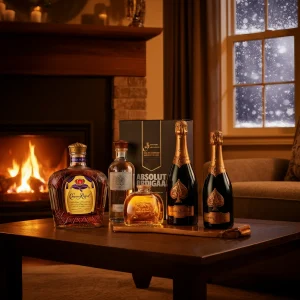Champagne Sweetness Guide: From Brut to Doux

Champagne has seven degrees of sweetness, ranging from Brut to Doux. Brut is the most popular and accounts for 80-90 percent of all champagne sales. Doux is extremely difficult to find and is most likely only found in France because not much is exported (as not much is made).
Brut Nature or Zero Sugar Added is becoming more popular in the twenty-first century, indicating that customer tastes are evolving. It’s vital to note that the sugar or dosage (the mixture of sugar and wine) added after disgorgement is more about house style than generating a sweet wine.
Also, because of the cool climate throughout the region, champagne is extremely acidic compared to other wines, so the dosage is used to balance out the acidity in order to create a more enjoyable drinking experience. In most cases, the dosage is not a set recipe; for example, it will not always be 8 g / l for brut if the acidity levels do not warrant it.
What Is The Sweetness Level Of Your Champagne?
On the champagne sweetness scale, we’ve ranked the many sparkling categories from least sweet to most sweet.
Brut Levels Of Champagne
Champagne comes in three Brut levels: Brut Nature, Extra Brut, and Brut. The most popular type of champagne is brut champagne. A bottle of brut champagne contains fewer than 12 grams of residual sugar per liter, which is around 1/2 teaspoon every 5 oz. glass.
This is the most popular style of champagne available, accounting for the majority of sales.
Veuve Pommery introduced this design in 1874. Brut Nature (also known as non-dosage or Ultra Brut) is bone dry, with no sugar added to the dose. These champagnes are also favorites of mine because they have the fewest calories of any champagne style (and are keto-friendly).
Laurent-Perrier produces two Brut Nature Champagnes: an Ultra Brut and a Blanc de Blancs. The third form of Brut champagne is Extra Brut, which has very little sugar added to it. Extra Brut is in the middle, with sugar levels ranging from 0 to 6 g/l.
The Billecart-Salmon Vintage 2008 is a superb vintage Extra Brut. This one is definitely worth picking up a few bottles of. Many producers make these three types of champagne, and you can easily discover all of them on J&J Alcohol Delivery.
4 Sweeter Styles of Champagne
Following the three brut champagnes, there are four sweeter champagne varieties that range in sweetness from Extra Sec, Sec, Demi-Sec, and Doux. Demi-Sec contains 32 – 50 g of sugar per liter, and some excellent choices for a Demi-Sec include Laurent Perrier Demi-Sec and Piper Heidsieck Demi-Sec.
The Demi-Sec is the ideal style for dessert! Doux is the sweetest, with over 50 g/l of sugar added in the dosage (and also perfect for a dessert pairing). Doux Champagne is Veuve Cliqout Rich.
Which Type Of Champagne Do You Prefer?
The driest variety of champagne is Brut Nature, which has no added sweetness. The sweetness is obtained through a technique known as dosing, which involves reintroducing sugar into the bottle before sealing it with a cork. The amount of sugar added determines the classification of the champagne, which ranges from Brut Nature to Doux (sweet). Have you tried them all yet?



